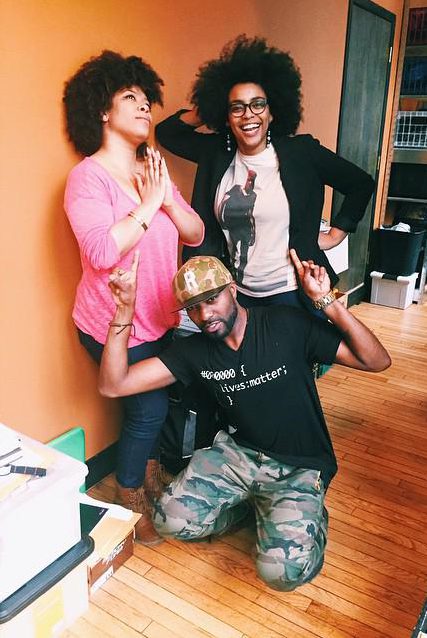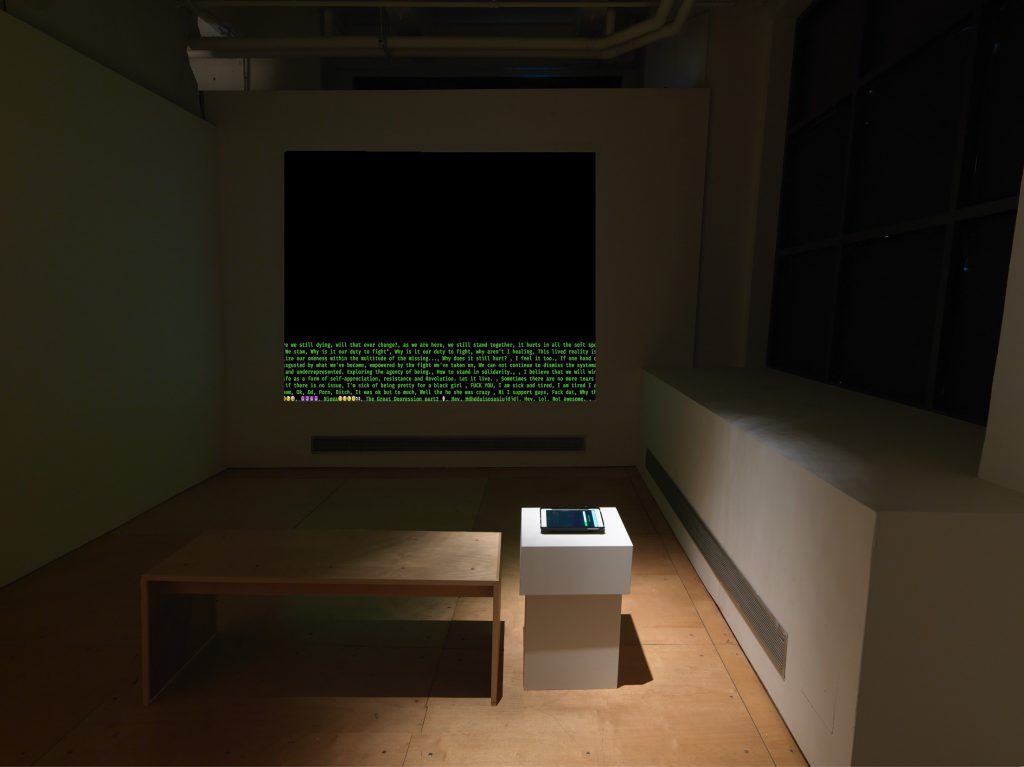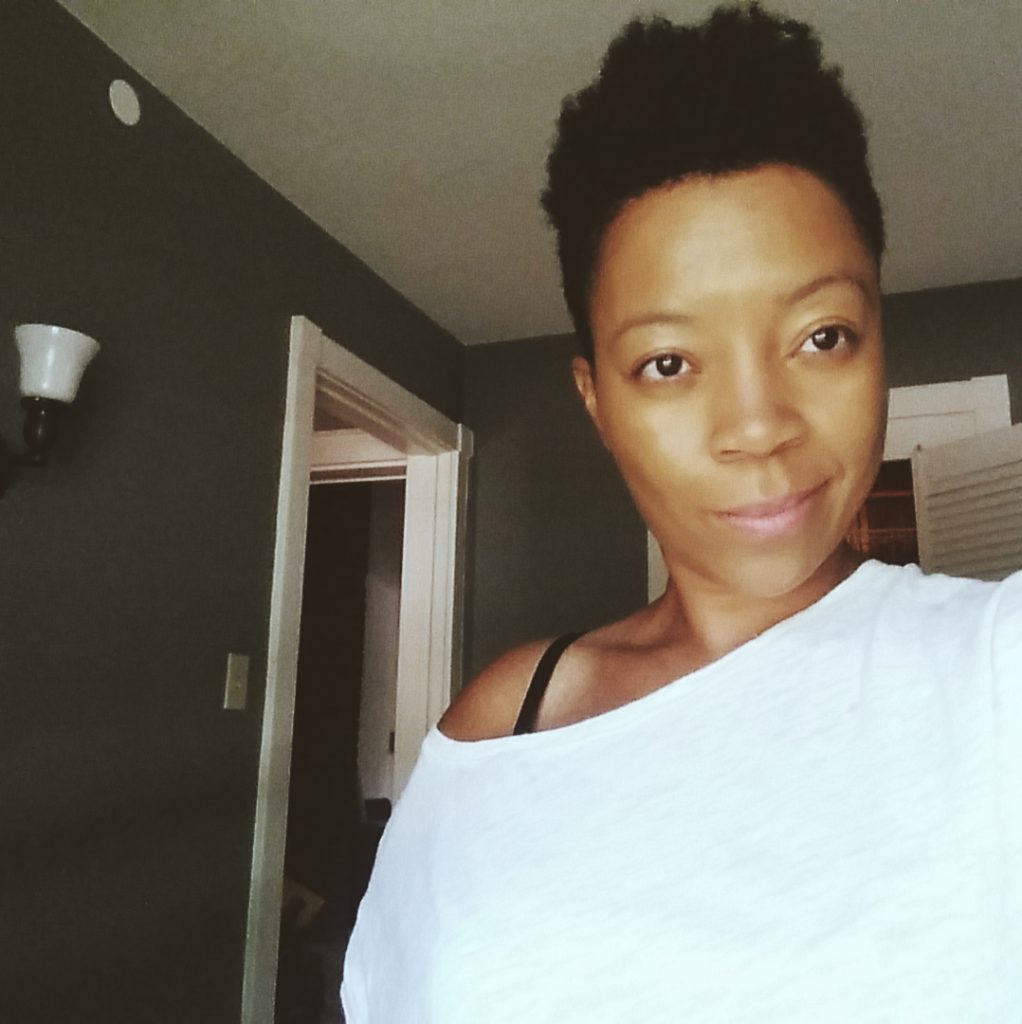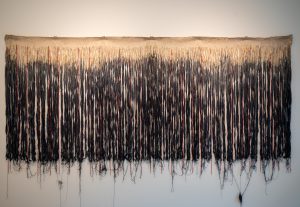James T. Green is an artist, designer, and podcast producer who uses his technological savviness to create megaphones for voices other than his own. In his work, he takes advantage of the widespread presence of and our familiarity with the digital tools that sit at our fingertips in order to dismantle and explode one-dimensional understandings that attempt to lock those of us who are women, queer-identified, and of color into a box of limitations and assumptions. Whether it’s his individual work or collaborative projects, Green makes space for people to articulate their experiences while intentionally pointing in the direction of embracing, finger-snapping, and deeply-sighing audiences.
But Green’s podcasts, designs, and artworks aren’t simply the intellectual flexing of a think piece in a different form. The collective commentaries he brings together absorb and push beyond the court of public opinion found in Facebook shares and Twitter hashtags. While holding on to a high level of quality, he makes room for raw, unscripted, and authentic reactions to everyday life from and for people who have often had their identity and points of view projected onto them.
For works like Processing and we(speak), he created interactive websites that welcome people to, on location or remotely, share their reactions to the aftermath of police violence against Black Americans within spaces not infringed on by hostile outside forces. He then taps into familiar emotional and visual territory by presenting the responses in a way that mimics the overwhelming feed of the 24-hour news cycle or cascading comment sections of social media. With Postloudness, a podcast platform that he cofounded with Alexandra Cox and Cher Vincent, he selects and helps produce conversations and commentaries that touch on everything from economics, to technology, sex positivity, mental health, feminism, robotics, pop-culture, and self-care. And that’s not even half of it.
He and his many collaborators and co-conspirators are working to make the digital space more welcoming to different ways of being. And in an effort to acknowledge his generosity and take a moment to make space for him, I spoke with Green about setting boundaries, his individual and expanded artistic practice, and the many projects that he unapologetically prioritizes in his professional and personal life.
Tempestt Hazel: Your frankness and transparency about the need to focus is something that I’ve always admired about you. In so many words, you state at the end of emails that you will not be reading emails in the wee hours of the night. On your website you list your current projects and let people know that you’re not going to take on any new projects that fall outside of that. I think we’ve talked in the past about overcommitment and burnout situations that artists find themselves in. Why is it important for you to clearly state the ways you’re making space for your interests and process?

James T. Green: On the daily, I manage generalized and social anxiety. This anxiety used to show up in a variety of ways from repeatedly stressing about things to obsessively checking inboxes. These spirals used to stop me from falling into my work and trying new projects. After years of realizing how this stops me in my tracks (and thanks to therapy and medication), I’ve realized it’s so easy to let other people’s expectations and communication get in the way. I’m lucky and privileged to be in a state in my career where I can provide more space in my work and slow down from the burnout that was prevalent in the beginning of my practice.
I’ve had best friends die unexpectedly, and I’ve had my own near death experience caused by a mixture of bad genes and overwork. I’m over the notion that we have to work ourselves to death to prove our worth. This isn’t to say hard work isn’t valuable, it truly is, but if you die before you see the fruits of your success, what good was it all for?
If I can be transparent in my availability, whether it’s through email signatures or statements on my website, it’s a way to not only tell myself that it can be done, but it’s a way to set expectations to others. No, I’m not going to have email notifications on my phone because I’d rather focus my attention on what I do to make a living and be done at a reasonable hour to get some chill time in, spend time with my partner, family, and friends, and get some sleep, but if you do contact me and it requires an actionable response, I will get back to you in a timely matter.

TH: In recent years, your individual studio practice has moved closer to using a web-based and design languages to talk about police violence. Sometimes you’re calling attention to specific instances like in your pieces we(speak), we(listen), we(act) were a response to the testimony of Officer Darren Wilson in Michael Brown’s court case back in 2015. At other times you’re giving commentary on larger questions, like what is progress? Or how do we as witnesses process these things when they happen? Then, you also use your skills to help movements like Black Lives Matter, like the t-shirt you designed with all sales going to help fund those efforts. Can you tell the story of that transition within your different practices?
JTG: This transition has been a way to explore how I can work through personal anxieties of being black in America while figuring out ways to use my reach to make social change. Sometimes, my social anxiety kicks in and the thought of placing myself in a crowd will stop me my tracks, but if I can use my skills to create things that make money to send bail money for the folks that are brave enough to stand in the crowd for our liberation, that is my form of activism.
In my day work, I spend the majority of my time creating systems to tell other people’s stories or making other people’s visions a reality. In my art practice, I’ve been finding ways to use those languages that I’m familiar with, web development and digital design, to tell my own story of living in my intersection. It’s been a journey that I’ve been trying to figure out for a decade, and until recently, I felt like I’ve found my sweet spot.

TH: Making room for other people is an essential part of your work. Sometimes that happens in the gallery space, like with the piece Processing, other times it’s by co-creating platforms like Postloudness to unify otherwise disparate commentary on contemporary art, culture, and tech. Why is that inclusive element important to you?
JTG: Building off the last question, I’ve been thinking so much about what’s next in my practice, and I’ve been more interested in finding ways to lessen my voice and amplify others. Over the last year or so, I’ve wondered about how other folks’ stories are more interesting than my own, and if my work can be a shell for those to thrive, so be it. I felt like I’ve told enough aspects of my cis black male experience, so let’s make room for others, whether it’s in visual art or radio.
TH: I know you have two other founders, Alexandra Cox and Cher Vincent, but speaking from your individual interest, what made you want to create something like Postloudness?
JTG: I was always a radio nerd since I was a child—much of my art over the last 8 years was created with a podcast on in the background. While the lens of radio has been so white and male for years, there have been folks out here doing the work, independently and for years, such as This Week in Blackness. It made me wonder, why is there not something like this in Chicago? It was a perfect storm of access to a space for recording, having co-founders with skills that ranged from marketing to operations, a background in producing audio from doing residencies in the past such as ACRE, friends around me that wanted to start shows, and a recent resurgence and interest in podcast among the general public. It felt like the time was finally right.

TH: What are you hoping to build with this platform?
JTG: Space. So many folks have different perspectives in what they want to talk about or discuss. It’s a natural extension of my visual art practice that has been built on making room. I also teach journalism at the School of the Art Institute of Chicago, so I love seeing how people grow over time, so Postloudness acts as a way to capture my teaching bug in-between classes. We recently had one of our shows, Highwater, get a wonderful feature in the AV Club. Seeing Chakka’s [host of Highwater] reaction was priceless. She was a perfect example of someone who we saw had a thriving interest in telling stories through radio, continually honing in her skills week to week, and continues to kill it. Things like that make every day worth it.
TH: What voices and stories are coming together in the Postloudness space?
JTG: So many more than I expected. While we are working on improving some of our other intersections, such as age diversity, and Asian representation, it’s been amazing to see what kind of topics are being explored through the 10 shows across our collective. Many times, certain topics will be covered on multiple shows, such as police brutality or family relationships, but when you have different intersections telling their side, you are greeted with a wide range of perspectives. Some will choose to use to take a highly polished and produced approach, while others will take a “we’re trying to figure it out live on the mic” approach, but the beautiful thing about space is you can have them exist among each other, and collectively, they all become even more valuable.
TH: In your opinion, what is it that radio can do that perhaps other media forms can’t? In other words, why create a podcast versus a video series?
JTG: Flexibility. As I mentioned earlier, I used to take in radio stories while working on other things for years. Or I would listen to radio stories while commuting to pick up supplies. Or road trips. Or rides with my family. You get the idea. Radio allows the flexibility to experience another point of view while moving through space or engaging in another activity. They become a companion to your life. Radio is also very intimate. You’re literally listening to someone’s voice for 15-60 minutes in your eardrums. They are taking you on a ride through thought. I love it.
TH: Let’s talk about the name–Postloudness. It makes me giggle a little bit because it seems to be a riff on terms like post-black, postmodern, post-race…all the posts. Or, it could mean post in terms of how we share information online–posting on blogs, posting on Facebook or Tumblr–and I love the idea of posting ones loudness or unapologetic them-ness. But enough of my musings, where did the name come from?
JTG: The name was all Cher. It was originally the name of a failed music review project we started years ago because we were young and impressionable idiots, but we snagged all the social handles and URLs and sat on them for years because we were smart in that sense. It was a great name. Cher stated in the past that it definitely was a reference to everything you mentioned. Post this, post that. We were Post-loud. It’s silly, but catchy at the same time.
TH: What other projects are you working on or involved in that you’re geeked about?
JTG: I’m really geeked on the growth Postloudness has had over the last few months. We are signing some more shows in the coming months and continuing production on a new show that’s launching soon. I’m also really hyped about the direction that my art practice is taking, and the new collaborative nature it’s taking. I just had my first ever New York showing in a group exhibition so that was a bucket list item I marked off. I have my first book coming out with The Perch in a couple months that I’m continuing development on, and the next semester of teaching starts back up in a couple of weeks. I’m just geeked about what the coming months have in store, and I’m looking forward to what’s next, while remembering to breathe.
Featured Image: James T. Green portrait by Zachary Sigelko.
 Tempestt Hazel is a curator, writer, artist advocate, and founding editor of Sixty Inches From Center. Her writing has been published in the Support Networks: Chicago Social Practice History Series, Contact Sheet: Light Work Annual, Unfurling: Explorations In Art, Activism and Archiving, on Artslant, as well as various monographs of artists and exhibition catalogues. tempestthazel.com
Tempestt Hazel is a curator, writer, artist advocate, and founding editor of Sixty Inches From Center. Her writing has been published in the Support Networks: Chicago Social Practice History Series, Contact Sheet: Light Work Annual, Unfurling: Explorations In Art, Activism and Archiving, on Artslant, as well as various monographs of artists and exhibition catalogues. tempestthazel.com






